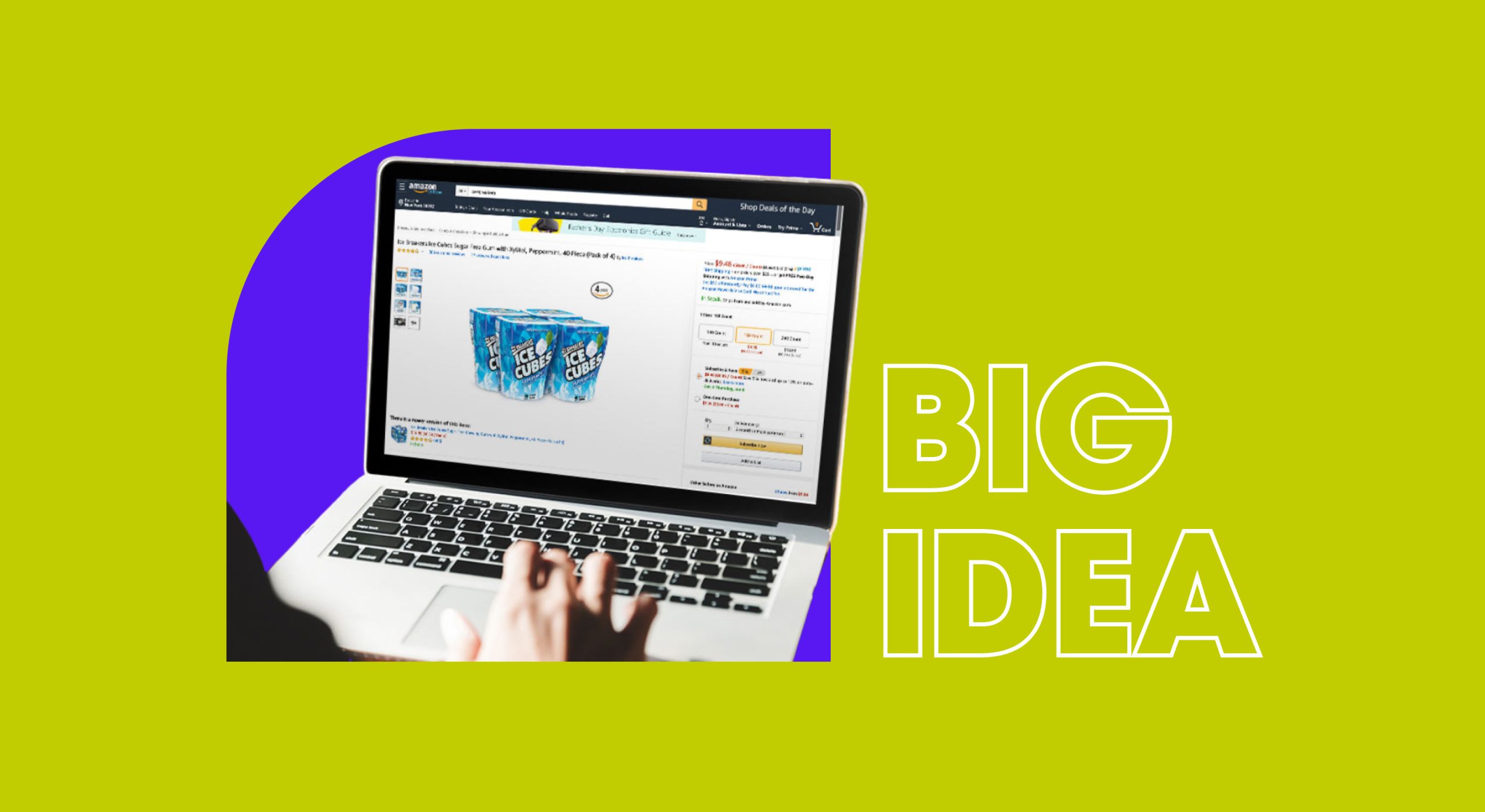Humans are social beings. We crave connection and thoughtful interactions, which is especially true in the ecommerce industry. To show consumers that you see them behind the screen, your ad campaigns should reflect that you listen to what they want AND need.
Of course, we also listen to what you crave. So, here’s a list of must-knows and must-dos to create campaigns that’ll captivate your target customers.
- Maximizing Amazon Ads’ potential 📈
- Initial costs of selling on Amazon 💰
- Amazon PPC’s pros and cons 🆚
- Foolproof dayparting strategies ⏲️

BIG IDEA
With 63% of shoppers starting their product hunt on Amazon, it's clear that this platform is the place to be. No wonder sellers on the platform earn between $1,000 and $2,500 per month, with some reaching $45,000 annually.
However, Amazon houses an overwhelming volume of products. So, how can you ensure you stand out from the crowd? ✋
Influencer Marketing Hub lists the tactics you can try to do this by leveraging the three types of Amazon ads:
- Master Sponsored Products. Most customers don't browse beyond the first page of search results. This ad type puts your products front and center, targeting specific customers based on keywords, categories, or brands.
- Use Sponsored Brands. Similar to Sponsored Products, this will help you get noticed. The difference is that these ads are designed to enhance brand visibility rather than promote a specific product.
- Add Sponsored Display ads to the mix. These ads target shoppers based on their buying behavior, not keywords. Unlike other ads limited to the platform, these ads extend your reach outside Amazon.
💡 Best advertising practices
Do note that simply putting out ads isn't enough anymore. To truly maximize results, you need to master campaign optimization.
Here are some best practices to elevate your advertising game:
- Diversify ad types: Don't put all your eggs in one ad basket. Use all available ad formats to increase brand visibility and drive sales.
- Target wisely: Mix and match different targeting methods to reach your ideal audience.
- Regularly test keywords: Keep tabs on your keywords' performance and adjust accordingly.
- Conduct regular audits: Regularly audit your campaigns to ensure you're on track to meet your goals.
- Optimize daily: Stay agile and make tweaks as needed to stay ahead of the curve.
🌊 Riding the Amazon wave
Facing the giants can be daunting, especially for small businesses. But it's not impossible to break through; it will just probably require doubling your efforts.
Just always remember that you're not just trying to sell—you're carving out your space in a bustling marketplace.

TOGETHER WITH EZ-COMMERCE
Initial costs you need to cover when starting on Amazon

Almost everyone's telling you to sell on Amazon if you want to get rich. What they don't publicize is the initial costs you might shell out on your first year of selling.
So, we're here to tell you straight up what you need to prepare for financially.
- Product inventory: Initial inventory purchases can be expensive, particularly if you're ordering in bulk to get better pricing. It's recommended to canvas suppliers before signing a deal with them. Some manufacturers require a minimum order quantity (MOQ), and the number might be too high, especially if you're just starting. Don't be afraid to negotiate this with them!
- Price: Depends on the product, but you might need to invest at least $500-$1,000 just for stock.
- Amazon fees: Selling on Amazon comes with various fees, including referral, fulfillment, and storage fees. These can add up quickly and eat into your profit margins. For example, FBA fees cover the cost of storing, packing, and shipping your products, but they’re not insignificant.
- Price: The Individual Account costs you $0.99 per item sold, and the Professional Sellers Account is $39.99 per month.
- Marketing and advertising: To get your product noticed, you'll need to invest in marketing and advertising. Amazon PPC campaigns, social media advertising, and influencer partnerships can cost several thousand dollars annually.
- Price: This depends on your budget. But it’s best to start with a budget of at least $100 for a successful PPC campaign.
- Tools and services: Subscriptions to essential tools for product research, keyword optimization, and inventory management can add up. Additionally, hiring professionals for photography, graphic design, and copywriting to create compelling product listings can be a significant expense.
- Price: Depends on whether you’ll do all of these yourself or find someone reputable to handle this for you.
If you’re looking for reputable experts to do PPC management and listing optimization, EZ-commerce can do it for you!
Ez-commerce was established by Dvir Cohen, an eight-figure seller and the author of more than 100 children's Kindle ebooks. They help brands scale and transform to achieve real net success in the Amazon market.
Want to learn more? Click on the link below.

BITES OF THE WEEK
- Keep Advertising: Even if you're organically on page 1, advertising still helps with sales.
- Media Envy: Amazon's commercial shows marketers' envy and how Amazon Ads can help.
- Ad-ding Up: Amazon reported a 24% growth ($143.3 billion total) in its advertising business.

HOT TOPIC
Does Amazon PPC boost sales or drain your cash?

So, you're hustling to get your products noticed on Amazon. You've set up your listings and optimized your keywords. Now, you're contemplating dipping your toes into pay-per-click (PPC) ads. 🤔
Will that really boost your sales, or are you just throwing money down the drain?
Brand Builder University weighed the pros and cons of investing in PPC ads (so you don’t have to).
👍 The good stuff
- The ranking factor: Imagine launching a product and it appears on page one of search results. That’s what Amazon PPC does—boosting your visibility and helping you climb search result rankings.
- Strong Return on Ad Spend (ROAS): On average, you get $4.50 back for every dollar spent. So, no, Amazon ads aren’t just throwing money into a black hole.
- Unique visibility: Amazon PPC gets your products in prime spots where shoppers are throwing money at anything that catches their eye.
- Depth of data: Amazon is a goldmine for customer data. PPC provides valuable insights—from simple click data to more complex metrics like impression share—all essential for growing your business.
- PPC efficiency: PPC advertising flips the script on traditional advertising costs. Instead of shelling out money just to get your ad in front of people, you only pay when someone takes action and clicks on your ad.
👎 The not-so-good
- Rising costs: As more sellers join the fray, bidding wars intensify and the Cost-Per-Click (CPC) continues to climb.
- Increasing complexity: With new ad types and targeting options popping up, it’s a jungle out there for newbies.
- Platform limitations: Want to retarget shoppers or play around with custom landing pages? It’s possible, but it’s not as straightforward as other platforms.
So, is PPC marketing worth it?
Definitely.
Sure, there are hurdles—but what business doesn’t have challenges? Plus, the benefits outweigh the drawbacks.
So, strap in and get ready to conquer the world of advertising, one click at a time. 🖱️

SELLER REFRESHER
How to maximize your reach through dayparting strategies

Did you know you can control when your ads shine the brightest?
Yep—through dayparting. It lets you schedule your ads to appear when your audience is most likely to make a purchase.
📍 Interested to get started? Here are some hacks from JungleScout to guide you:
- Start wide, then narrow down. Begin with broader time windows and refine them as you gather more data.
- Dig into data. Analyze past performance to spot trends and pinpoint those golden hours. ☀️
- Find your peaks. Identify the hours when your audience is most active and ready to splurge.
- Mind the time zones. Ensure your ads are synced with your audience’s time zones.
- Experiment. Try different strategies and see what works best.
- Tweak, rinse, repeat. Set your schedule, but don’t hit snooze. Keep an eye on performance and adjust your strategy as needed. 🔁
Daypart to not part with success
Dayparting is your precision tool for hitting the bullseye in advertising. Instead of tossing ads into the void, you're analyzing data and refining your strategy to maximize your return on investment.
⚠️ However, it can also be a double-edged sword. Be wary of overspending during peak hours; too much of a good thing can be overwhelming. Also, don’t ignore off-peak hours—they may hold untapped potential.







